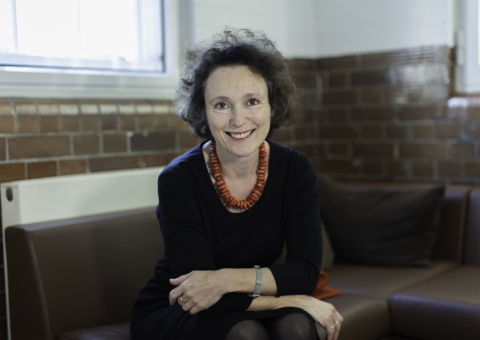Art’s shock troopers weren’t prepared for tears

Volunteers acting as WW1 soldiers in train stations and shopping centres were prepared for everything the public could throw at them —except tears.
When people realised the silent figures represented the men killed on the first day of the Battle of the Somme, many broke down with a display of emotion which shocked the organisers of the UK’s 14-19 NOW programme of art experiences which marked the centenary of the First World War, said its Director Jenny Waldman.
Jenny, who will describe the impact of 14-18 NOW at Buxton International Festival, said that many of the “soldiers”, who silently gave a card with the name and age of a serviceman killed in the battle to anyone who asked what they were doing, were met with floods of tears.
”What we didn’t train people for was the emotional response that they encountered,” said Jenny. “They read the card and burst into tears, saying: ‘That could have been my son’.”
14-18 NOW was one of the largest public art commissions ever, with 325 artworks seen by more than 30 million people.
“It was way in excess of our wildest dreams,” said Jenny, who was previously Creative Producer of the finale of the Cultural Olympiad for the London 2012 Olympic and Paralympic Games.
The silent soldiers were part of We’re Here Because We’re Here, organised by artist Jeremy Deller and named after a song popular among the troops. The shock tactic of seeing WW1 soldiers waiting for trains or lining up on streets was one of the highlights of 14-18 NOW which also included giant sand paintings on beaches, drama and music.
Jenny, who will be talking on July 15 about the project and the book which has been produced to celebrate it, said that the NOW part of the title was vital:
“We were looking back in order to better understand the world in which we find ourselves.”
In some parts of the globe, the end of the First World War was the beginning of conflicts which continue today: for example, The Sykes-Picot Line was drawn on a map by the victorious allies to carve up the Middle East between them – leading to conflicts in Palestine, Iraq and Syria among others.
“The people there are very much more aware of that Line and the consequences it had than we are,” said Jenny.
Two of the most stunning artworks in 1914-18 were the ceramic poppies in Blood Swept Lands and Seas of Red created for The Tower of London by Derbyshire artist Paul Cummins, and the Peter Jackson film, They Shall Not Grow Old, which brought black-and-white silent film of soldiers at the Front to new life with colour and sound.
“There is something about an artistic experience that gets you talking and feeling,” said Jenny.
“When people had seen our arts programme, they were more likely to find out about the involvement of their own family.”
l Jenny Waldman: 14-18 NOW Five Years of Extraordinary Art Experiences, July 15, 10am to 11am, The Palace Hotel, Buxton. For details, got to www.buxtonfestival.co.uk
